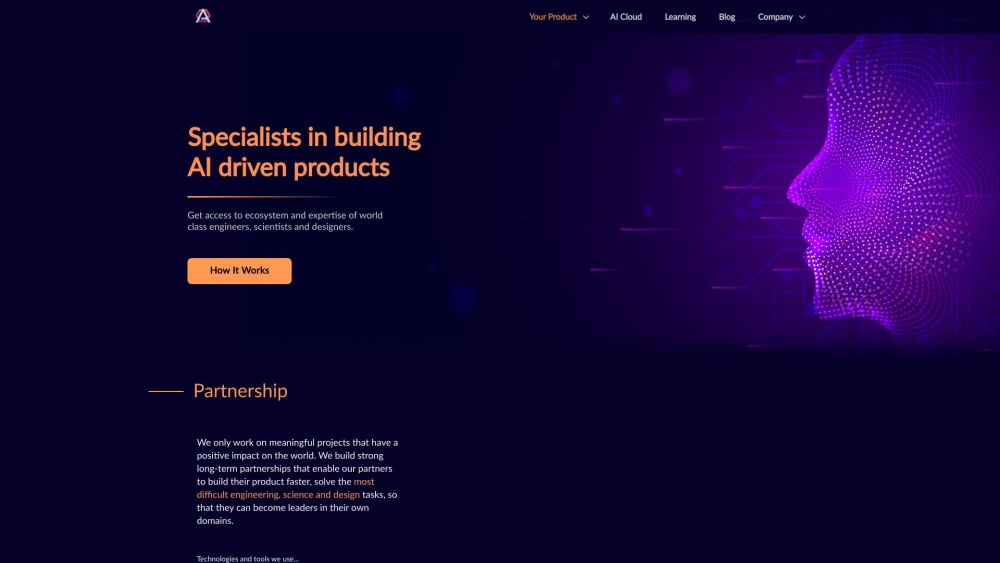One Year Later: The Evolution of Generative AI
A year ago, we predicted that generative AI would catalyze a significant transformation within the technology sector. Since then, we've witnessed remarkable changes. Researchers in various fields—scientists, historians, and economists—have long analyzed the ideal conditions for bursts of innovation akin to the Cambrian explosion. With generative AI, we find ourselves in a modern marvel, a new space race defined by decades of technological progress: six decades of Moore's Law offering expansive computational power, forty years of internet data generating trillions of tokens for training, and two decades of mobile and cloud computing enabling access to supercomputing capabilities. These advancements have set the stage for the rise of generative AI.
The launch of ChatGPT sparked this transformation, releasing a wave of innovation and excitement that hasn't been seen since the early days of the internet. In Silicon Valley, the enthusiasm is palpable; AI researchers have become sought-after figures, attracting crowds at weekend hackathons. The once modest garage "hacker" has evolved into an expert wielding billions in computational resources. The volume of research output on platforms like arXiv has surged, prompting jokes about needing to pause new publications to catch up.
However, the initial excitement transitioned into a frenzy. Suddenly, every company labeled itself an “AI co-pilot,” inundating inboxes with indistinguishable pitches like “AI Salesforce” and “AI Adobe.” The resurgence of $100 million seed rounds fueled a competition for funding, talent, and GPU resources, creating unsustainable dynamics. Concerns arose as artists, writers, and musicians questioned the legitimacy of machine-generated intellectual property, while discussions about ethics, regulations, and the specter of superintelligence echoed through government corridors.
Doubts began to emerge within Silicon Valley about the utility of generative AI as product performance often failed to meet expectations, reflected in declining user retention rates. The demand for numerous applications appeared to plateau, leading some to wonder if we were in yet another bubble. Critics intensified their scrutiny, reminiscent of the late 1990s when an economist predicted that “by 2005, it will be clear that the internet will not have a greater economic impact than the fax machine.”
Despite the noise and uncertainty, generative AI has outperformed the early growth of SaaS, generating over $1 billion in startup revenue within months—SaaS required years to achieve similar milestones. Notable applications have emerged: ChatGPT is the fastest-growing app, particularly among students and developers; Midjourney has become a creative powerhouse with hundreds of millions in revenue; and Character has redefined AI companionship, with users averaging two hours in the app.
Yet, early successes do not negate the fact that many AI companies still lack product-market fit and sustainable competitive advantages, raising questions about the ecosystem's long-term viability. As the dust settles, it’s time to reflect on generative AI's current state and future trajectory.
Phase Two of Generative AI: Reimagining the Landscape
The first year of this new phase—“Act One”—focused on technological innovation, discovering foundational models that triggered a wave of technological demonstrations. We now believe the market is entering “Act Two,” which prioritizes the customer experience and tackles human problems comprehensively.
Emerging applications differ significantly from earlier launches, often integrating foundational models within broader solutions. They are becoming multimodal, enhancing workflows and output. The shift from “Act One” to “Act Two” is already underway, with companies like Harvey tailoring large language models (LLMs) for leading law firms, Glean indexing workspaces for more relevant AI integration, and Character and Ava creating digital companions.
Our updated generative AI market map shifts from model modalities to use cases, illustrating two key market trends: the transition from technological tools to practical application and the growing multimodal nature of applications. We’ve also introduced a new LLM developer stack, showcasing the evolving landscape of computing and tool suppliers facilitating generative AI development.
Reflecting on Predictions: What We Got Right and Wrong
Last year’s analysis examined potential trajectories for generative AI. A year later, how accurate were our forecasts? Here are some miscalculations:
1. Rapid Development: We underestimated the speed of advancements. Just a year ago, we speculated it might take nearly a decade to achieve intern-level code generation or high-quality video production. However, advanced AI-generated voices and visuals have emerged at surprising speed.
2. Supply Chain Bottlenecks: We didn’t foresee that user demand would surpass GPU supply. Many companies face growth bottlenecks caused by difficulties acquiring key hardware, leading to subscription models that allow users to skip waiting times.
3. Lack of Vertical Separation: We still anticipate a future separation between application-layer companies and foundational model providers focused on scalability and research. However, this division has yet to materialize, with successful applications being vertically integrated.
4. Evolving Competitive Landscape: Last year, we identified overcrowded categories like image generation and copywriting, yet the overall competitive scene has become increasingly fierce and complex.
On the positive side, we correctly predicted the following:
1. Generative AI is Here to Stay: Developers are increasingly engaging with generative AI applications, sparking demand from both consumers and enterprises. Generative AI is now a mainstream concept, influencing culture through viral content and innovative music.
2. Awakening of Killer Apps: ChatGPT achieved 100 million monthly active users rapidly, setting a record for user acquisition speed. Deep engagement metrics from various applications highlight the emergence of significant players in the space.
3. Developers as Key Drivers: Platforms centered on developers are unlocking new use cases, with creativity blossoming in areas like music generation and AI-powered customer support.
4. Evolution of Applications: AI applications are advancing from basic functionality to increasingly sophisticated offerings. Features like Midjourney’s camera pans illustrate the commitment to enhancing user experience.
5. Conversations on Copyright and Ethics: Ongoing debates around copyright and AI ethics are intensifying as artists and creators express diverse opinions on the implications of machine-generated content.
Current Landscape: Proving Value Amidst Demand
Generative AI is rich with use cases and user demand. Users seek AI tools that simplify tasks and improve outcomes, driving unprecedented interest in various applications.
However, will users sustain their engagement? The answer is unclear; generative AI applications currently average only 14% month-over-month retention, significantly lower than leading consumer platforms. This implies users have not yet found sufficient value to engage with these products daily.
Thus, the primary challenge for generative AI involves demonstrating tangible value rather than finding use cases or gaining distribution. As our colleague aptly notes, “The critical question is: How will this infrastructure change lives?”
Building successful businesses will hinge on overcoming retention challenges and providing substantial value to customers. Despite setbacks, generative AI remains in its “awkward teenage phase,” with potential for growth. Noteworthy successes occasionally emerge, and predictable failures provide opportunities for improvement.
Phase Two Analysis: A Path Forward
Founders are diligently engaged in refining their AI products through prompt engineering, fine-tuning, and dataset curation. They are transforming promising demos into cohesive product experiences as foundational models continue to evolve through research and innovation.
The tech ecosystem now shares tools to enhance model functionality, while new interface paradigms will shape the development of generative AI. Techniques such as chain-of-thought reasoning are improving models' ability to tackle intricate tasks, bridging the gap between user demands and model capabilities.
The Road Ahead
As we advance in the generative AI landscape, the focus is shifting from hype-driven showcases to delivering genuine value through holistic product experiences. At Sequoia, we remain optimistic about generative AI. The conditions for this market's growth have matured over decades, and the moment has arrived.
The emergence of killer applications and robust end-user demand reinforce confidence in this sector. However, we must beware of Amara’s Law—the tendency to overestimate a technology’s short-term impact while underestimating its long-term potential. We approach investment decisions with patience, closely observing how founders prove value and leverage shared tools to drive innovation in generative AI.






